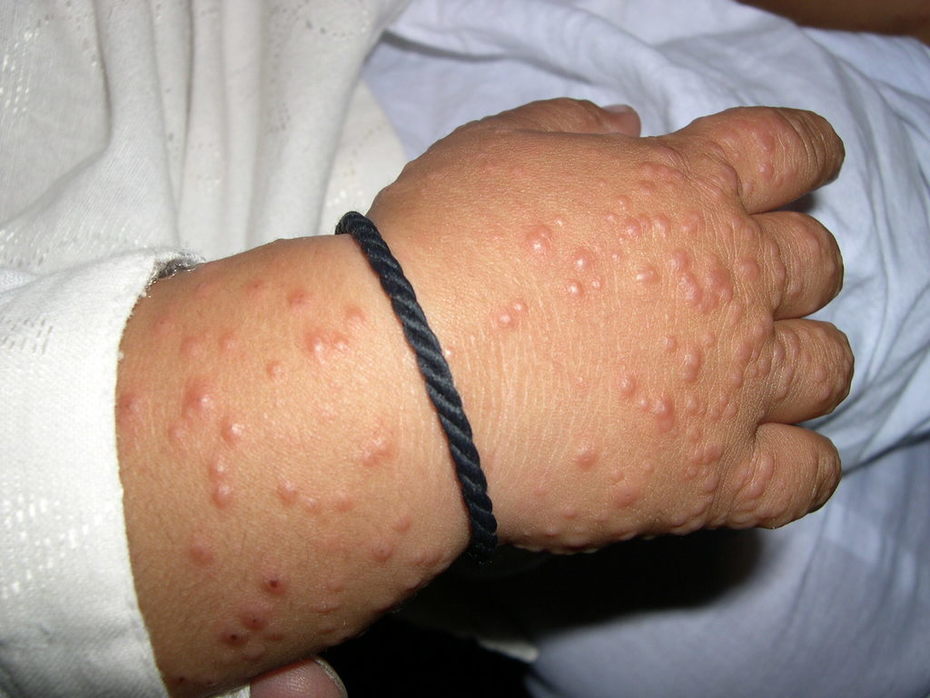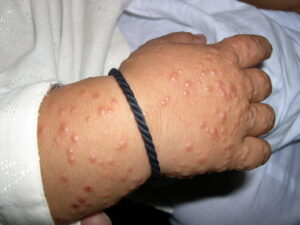Gianotti-Crosti Syndrome: Understanding the Mysterious Viral Rash in Children


Gianotti-Crosti Syndrome, also known as acrodermatitis of childhood, is a rare and intriguing skin condition that primarily affects young children. Characterized by a distinctive rash and swollen lymph nodes, this syndrome has puzzled parents and healthcare professionals alike. In this blog, we will delve into the world of Gianotti-Crosti Syndrome, exploring its symptoms, causes, diagnosis, and treatment, to shed light on this enigmatic childhood disorder.
What is Gianotti-Crosti Syndrome?
Gianotti-Crosti Syndrome (GCS) is a benign and self-limiting skin disorder that predominantly affects children between the ages of 6 months and 14 years. It was first described by Italian physicians Ferdinando Gianotti and Antonio Crosti in the 1950s. The condition is also known by various other names, such as papular acrodermatitis of childhood and papulovesicular acrolocated syndrome.
Identifying the Symptoms
The hallmark feature of Gianotti-Crosti Syndrome is the appearance of a symmetrical, non-itchy rash on the extremities, including the face, buttocks, and limbs. The rash typically consists of small, raised, reddish or flesh-colored papules or vesicles. In some cases, the rash may be accompanied by mild fever and malaise.
Read More : Summarized Version Of The Common And Dangerous Diseases
Causes and Triggers
The exact cause of Gianotti-Crosti Syndrome remains unclear, but it is believed to be triggered by certain viral infections. Common viral culprits include hepatitis B virus, Epstein-Barr virus (EBV), cytomegalovirus (CMV), and enteroviruses. The immune response to these viral infections seems to be responsible for the development of the characteristic skin rash.
Diagnosing Gianotti-Crosti Syndrome
Diagnosing GCS can be challenging due to its rarity and the similarity of its symptoms to other skin conditions. A thorough physical examination, along with a detailed medical history and the presence of concurrent viral infections, can aid in the diagnosis. In some cases, a skin biopsy may be performed to rule out other skin disorders.
Management and Treatment
Fortunately, Gianotti-Crosti Syndrome is typically a self-limiting condition that resolves on its own within a few weeks to months. As the rash is not itchy, treatment primarily focuses on managing any associated symptoms, such as fever or discomfort. Over-the-counter pain relievers and antipyretics may be recommended. It is essential to ensure proper hydration and rest during the recovery period.
Differential Diagnosis
Distinguishing Gianotti-Crosti Syndrome from other skin conditions is crucial for accurate management. Conditions that may resemble GCS include viral exanthems, allergic reactions, and other infectious or inflammatory skin disorders. Proper evaluation by a dermatologist is essential for an accurate diagnosis.
Read More : Understanding the Root Causes of Anxiety and Worry
Prognosis and Long-term Effects
The prognosis for Gianotti-Crosti Syndrome is generally excellent, with most children recovering completely without any lasting effects. Recurrence is rare, and the condition does not leave any significant scarring. However, it is essential to monitor the child’s progress and seek medical attention if new symptoms arise.
Conclusion
Gianotti-Crosti Syndrome remains a fascinating and uncommon skin disorder affecting young children. Despite its enigmatic nature, healthcare professionals can recognize the distinctive rash and associated symptoms to provide appropriate care and reassurance to concerned parents. As with any medical condition, it is crucial to consult a healthcare professional for an accurate diagnosis and tailored management. As we continue to explore the complexities of the human body, medical science will undoubtedly uncover more about this intriguing syndrome, benefiting the health and well-being of our youngest and most precious patients.







